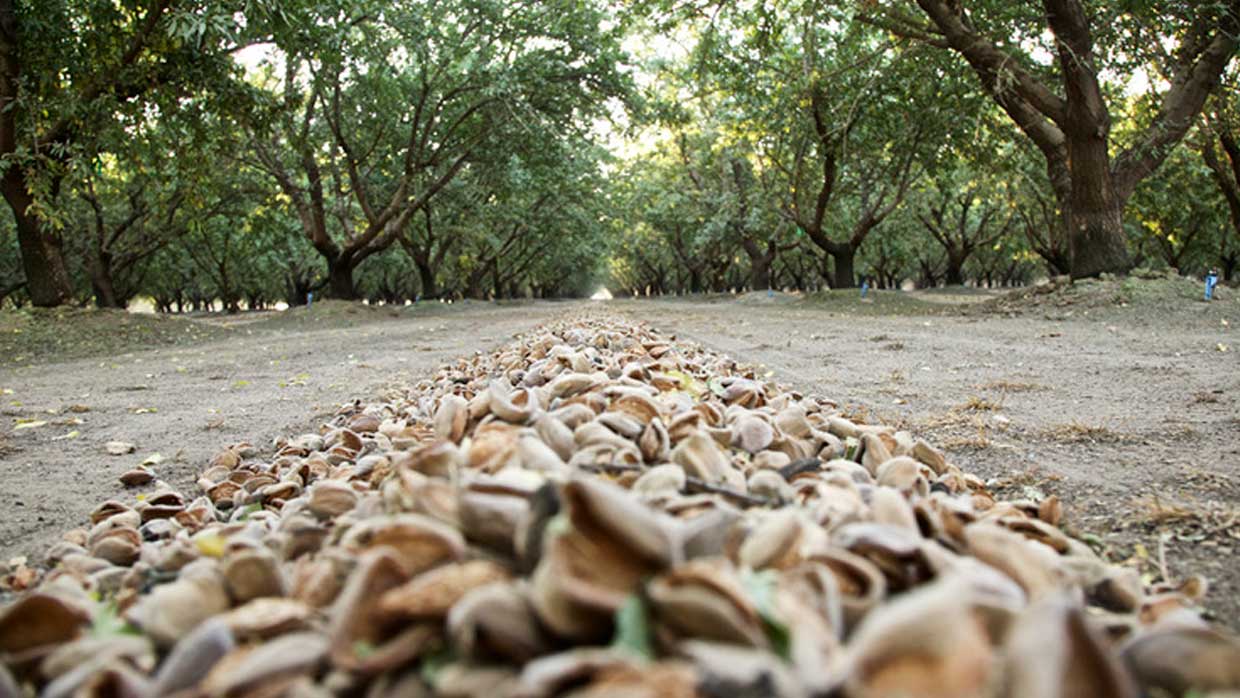A successful almond harvest begins with a clean, dry orchard floor.
Almonds should be harvested as soon as possible after they have matured to avoid quality loss and to minimize exposure to navel orangeworm and associated potential for aflatoxin contamination.
After the crop is mechanically shaken to the ground, the nuts are raked into windrows and allowed to dry naturally, ideally to a hull moisture content that does not exceed 12 percent, or a kernel moisture content that does not exceed 6 percent, which can take anywhere from a few days up to two weeks.
A harvest sample taken after shaking and before the crop is windrowed will provide a progress report of that season’s integrated pest management (IPM) program, and will indicate what pests are in the almond orchard, which will, in turn, help determine the management activities for the next year.
Pickup machines sweep the windrows into carts or trailers for transportation to a huller/sheller facility. With the large crops of recent years, it has become more and more common for almonds to be stockpiled, either in the orchard or at the huller/shellers. To avoid insect damage, stockpiles should be monitored and fumigated if necessary.


